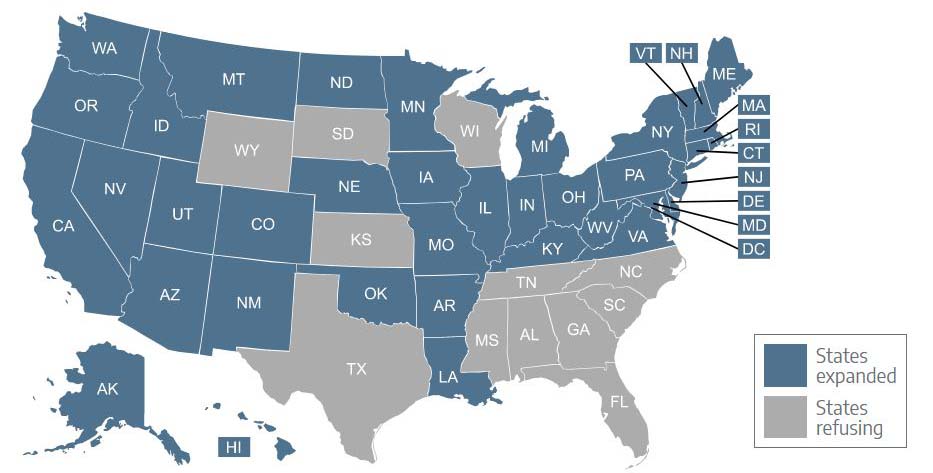Please provide your zip code to see plans in your area.
Featured

Featured

1332 waiver
What is a 1332 waiver?
What is a 1332 waiver?
Section 1332 of the ACA allows states to be innovative in their approach to healthcare reform by obtaining 1332 waivers from the federal government. States can propose unique, state-specific solutions – which can include fairly substantial changes in terms of how the Affordable Care Act is implemented in the state – as long as consumer protections are maintained, people don’t lose coverage, and the federal government doesn’t have to spend any more than they would have without the state’s innovation.
What determines whether a 1332 waiver will be approved?
In order to be approved, a state’s 1332 waiver proposal must ensure that:
- Residents will have access to health insurance coverage that is at least as comprehensive as it would be without the waiver.
- Premiums and cost sharing have to be at least as affordable as they would be without the waiver.
- At least as many people have to be covered under the state’s new approach as would be covered without the waiver.
- The state’s approach cannot result in increased federal spending.
In 2018, the Trump administration issued new regulations pertaining to 1332 waivers, with a more lenient approach to the guardrails that the ACA created. The administration also published an overview of waiver concepts that states could potentially utilize.
With the exception of Georgia, states expressed little interest in new 1332 waiver guidelines. And HHS rescinded them in rules that were finalized for 2022.
How does a state apply for a 1332 waiver?
To apply for a 1332 waiver, a state has to submit a proposal to CMS, with detailed explanations of what ACA provisions they wish to waive, how the state-specific program will be implemented, the proposed budget, and how the program will meet the four basic guidelines described above.
Which states have had 1332 waivers approved?
CMS has a web page where you can see details about the states that have submitted 1332 waivers, and the status of those proposals. As of late 2022, waivers have been approved for 19 states, mostly for reinsurance programs:
- Hawaii (eliminate SHOP exchange, effective in 2017)
- Alaska (reinsurance, effective in 2017)
- Minnesota (reinsurance, effective in 2018)
- Oregon (reinsurance, effective in 2018)
- Wisconsin (reinsurance, effective in 2019)
- Maine (reinsurance, effective in 2018)
- Maryland (reinsurance, effective in 2019)
- New Jersey (reinsurance, effective in 2019)
- North Dakota (reinsurance, effective in 2020)
- Montana (reinsurance, effective in 2020)
- Delaware (reinsurance, effective in 2020)
- Colorado (reinsurance, effective in 2020)
- Rhode Island (reinsurance, effective in 2020)
- Pennsylvania (reinsurance, effective in 2021)
- New Hampshire (reinsurance, effective in 2021)
- Georgia (reinsurance, effective in 2022, and elimination of the state’s exchange in 2023; the latter was suspended by the Biden administration, so Georgia still uses the federally-run health insurance exchange)
- Virginia (reinsurance, effective in 2023)
- Idaho (reinsurance, effective in 2023)
- Washington (will allow undocumented immigrants to use the state’s exchange as of 2024; they will be eligible for state-funded subsidies, but not federal subsidies)
How are states utilizing 1332 waivers?
Most of the 1332 waivers that states have submitted thus far have been to implement reinsurance programs to stabilize states’ individual markets. Reinsurance reduces premiums, which means premium subsidies are smaller. The states that have created reinsurance programs have used the 1332 waivers in order to recapture the money that the federal government would otherwise have saved as a result of smaller premium subsidies. The states then get to use this “pass-through” funding to cover most of the cost of the reinsurance program. Without a 1332 waiver, the federal government would simply keep the savings.
(Reinsurance programs are much less useful from 2021 through 2025, because the American Rescue Plan and Inflation Reduction Act have temporarily eliminated the “subsidy cliff.” Without a subsidy cliff, there are far fewer people who can benefit from the lower-cost full-price premiums that reinsurance creates. And the lower premiums also result in smaller premium subsidies, which can make some subsidized enrollees worse off.)
But there have been some other uses and potential uses of 1332 waivers:
- Hawaii uses a 1332 waiver to avoid having a SHOP (small business) exchange.
- Washington has received federal approval for a 1332 waiver that will allow the state to let undocumented immigrants enroll through the exchange and take advantage of new state-funded subsidies (nationwide, ACA rules prohibit undocumented immigrants from using the exchange, even if they don’t receive federal subsidies).
- Colorado (which already had a 1332 reinsurance waiver in place) received federal approval to amend its 1332 waiver as of 2023 to recapture premium subsidy savings generated by a new state option health plan, and use the money to improve benefits and/or coverage affordability for Colorado residents.
- Georgia received approval (which was later suspended by the Biden administration) for a 1332 waiver that would eliminate the use of HealthCare.gov without creating a state-run exchange.
- Vermont had planned to use a 1332 waiver to create a single-payer system, but ultimately abandoned that idea.
- California had hoped to use a waiver to allow undocumented immigrants to buy health plans in the state’s exchange, but withdrew the waiver proposal over concerns that the Trump administration might use data from the exchange for immigration enforcement. As noted above, Washington has received approval for a similar waiver under the Biden administration. And legislation has been filed in California as of late 2022 to revisit this issue.
- Iowa submitted a complex 1332 waiver that would have overhauled the state’s insurance market, but later withdrew it when the approval process was taking longer than anticipated.
- Oklahoma also submitted a complex 1332 waiver application in 2017, but ultimately withdrew it.
So although federal pass-through funding for reinsurance has been by far the most common use of 1332 waivers thus-far, states have also begun to introduce new concepts in their waiver proposals, and shape their markets in innovative and state-specific ways.
Related terms
Related articles
Twelve states received federal approval for Medicaid work requirements, but the Biden administration has since revoked approval for all of them.







